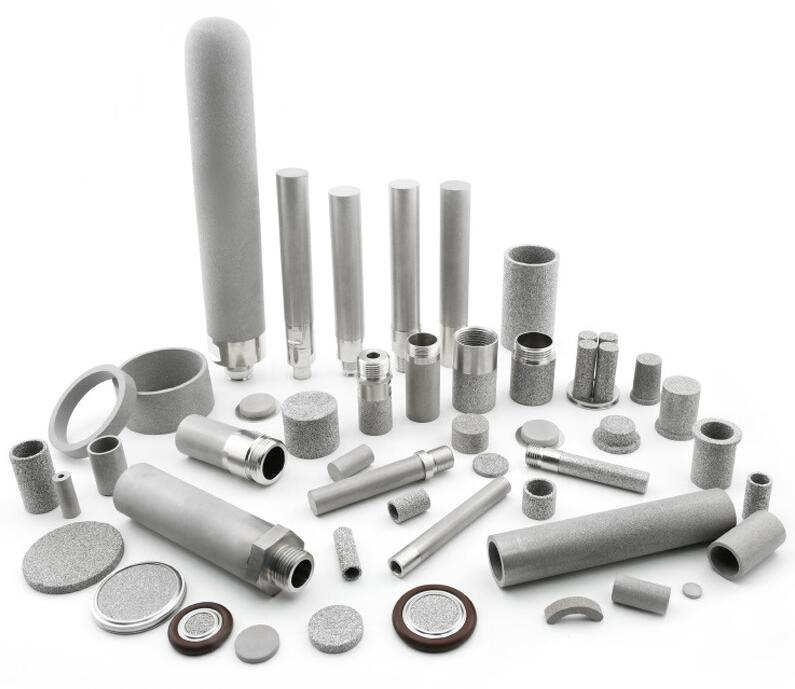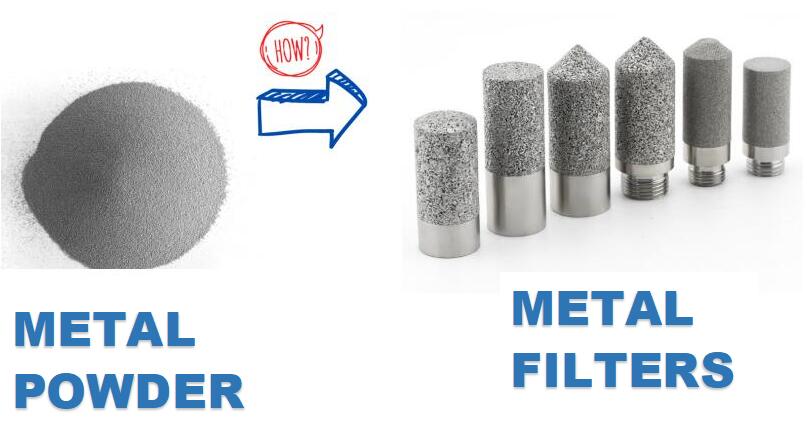
For Sintered Metal, What is that ?
What is Sintered Filter Working Principle ?
Short to say, Because of the stable porous frame, sintered metal filters are one of the better filtration elements
nowadays. Also, the metal materials' high temperature, high pressure, and corrosion resistance can help you
easily complete the filtering task in a harsher environment, Separating and filtering out excess impurities
you don't need or helping you extract higher purity gases or liquids for your project.
Maybe You Should not hear this word much in your daily life.
But nowadays, sintered metal to use more and more in various industries, the sintered metal has started to become
the key technology in some manufacturing.
Then What Exactly is a Sintered Metal ?
Actually, it is a branch of the powder metallurgy industry, in short, is the 316L stainless steel powder through the mold
shaping, high temperature sintering into the shape and function of a process that we need.
Then, Firstly, sintered. What is sintered? Sintering is the process of compacting and forming a solid mass of material
by heat or pressure without melting it to the point of liquefaction. Sintering is part of a manufacturing process used
with metals, ceramics, plastics, and other materials. Wikipedia
As Wikipedia describes, many kinds of materials can be sintered, and different materials sintered products have
different applications. Then here we like to talk more details about sintered metal.
History of Sintering Metal
1. Who Inventions the sintering and started to use the sintered products?
According to historical records, the sintering process emerged during the second industrial revolution 18th century
in Sweden and Denmark. Sintered iron was found during the smelting process in coal mines. But till 1980, people
started to use the sintered metal to the filtering oil. And for 1985, the first used HyPulse® filtration technology for
continuous slurry oil filtration.
It marks the beginning of sintered metal filters.
The setup demonstrated the suitability of sintered metal media for heat filtering of slurry oil for a carbon fiber
growth process.
The filter ran accurately for years creating clean oil with solids material of less than 20 ppm solids and was
eventually closed down due to low item demand. Since then, refineries worldwide have become aware of the
advantages of filtration using sintered metal media for catalyst fines elimination in slurry oil solutions.
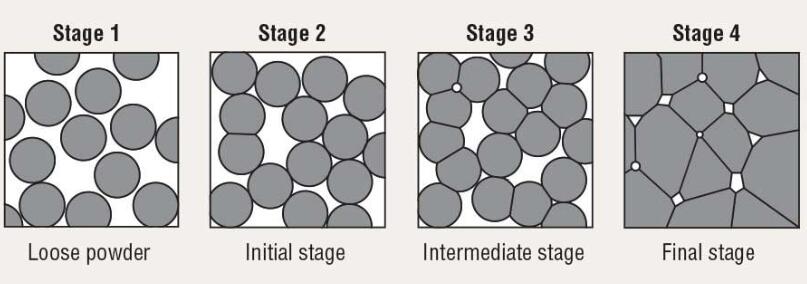
Since 1997, many refineries in China have mounted LSI purification systems for stimulant elimination in resid
fluid catalytic fracturing (RFCC) systems. Set up A filtration system with (2) 24" LSI filters was set up in an RFCC
system with 1.4 million statistics bunches (mt) each year capability and a result of slurry oil of 180 mt/day. The
slurry oil has an ordinary 3,000 to 5,000 ppm solids focus. Cycle time varies from 2 to 8 hours. The filtrate solids
material is under 50 ppm. The filter is controlled by a local PLC that communicates with the refinery distributed
control system (DCS) to enable the driver to monitor the purification in the control space. The system has
constantly been running, providing a local business with clean filtrate to generate carbon black. So as the
application, the sintered Metal, It is mainly used to filter or separate solids or magazines from liquids or
gases for the purpose of purification.
2. So What is Sintered Metal Filter ?
A simple definition of sintered metal filter: It is a metal filter that uses metal powder particles of the same
particle size to be shaped by a stamping, high-temperature sintering process. Sintering is the process of
metallurgy using powder-sized bodies of different metals and alloys after stamping.
Metallurgy occurs by diffusion at temperatures below the melting point of high-temperature furnaces.
The metals and alloys commonly used today include aluminum, copper, nickel, bronze, stainless steel,
and titanium.
There are different processes you can use to form the powder. They include grinding, atomization,
and chemical decomposition.
3. What the Sintering Metal Filter Manufacturing Process
Then, so here, we like to check the process detail of Metal filter manufacturing. if interested, please check below:
1.) What is Sintering, Why Use Sintering?
Simple definition sintering is metal powder is bonded together by high temperature and other methods into
the desired module. In the micron range, there is no physical limitation between the metal powder particles,
which is why we can control the pore distance
through the production process.
The porous cartridge of the sintering process provides the stable shape of the metal and provides
the material with the performance of robust filtration.
2.) 3-Main Steps of Sintered Metal Filter Manufacturing
A: First Step is To Get the Power Metal.
The metal powder, You can obtain metal powders by grinding, atomization, or chemical decomposition.
You can combine one metal powder with another metal to form an alloy during the fabrication process,
or you can use only one powder. The advantage of sintering is that it does not change the physical
properties of the metal material. The process is so simple that the metal elements are not altered.
B: Stamping
The second step is to pour the metal powder into a pre-prepared mold in which you can shape the filter.
The filter assembly is formed at room temperature and under stamping. The amount of pressure applied
depends on the metal you are using, as different metals have different elasticity.
After a high-pressure impact, the metal powder is compacted in the mold to form a solid filter. After the
high-pressure impact procedure, you can place the prepared metal filter in a high-temperature furnace.
C: High-temperature Sintering
In the sintering process, the metal particles are fused to form a single unit without reaching the melting point.
This monolith is as strong, rigid, and porous a filter as the metal.
You can control the porosity of the filter by the process according to the flow level of the air or liquid to be filtered.
The sintered media grade designation is equivalent to the mean flow pore, or average pore size of the filter.
Sintered metal media are offered in grades 0.1, 0.2, 0.5, 1, 2, 5, 10, 20, 40 and 100. The filtration rating in
liquid for media grades 0.2 to 20 is between 1.4 and 35 µm absolute. The filtration rating in gas ranges
from 0.1 to 100 µm absolute.
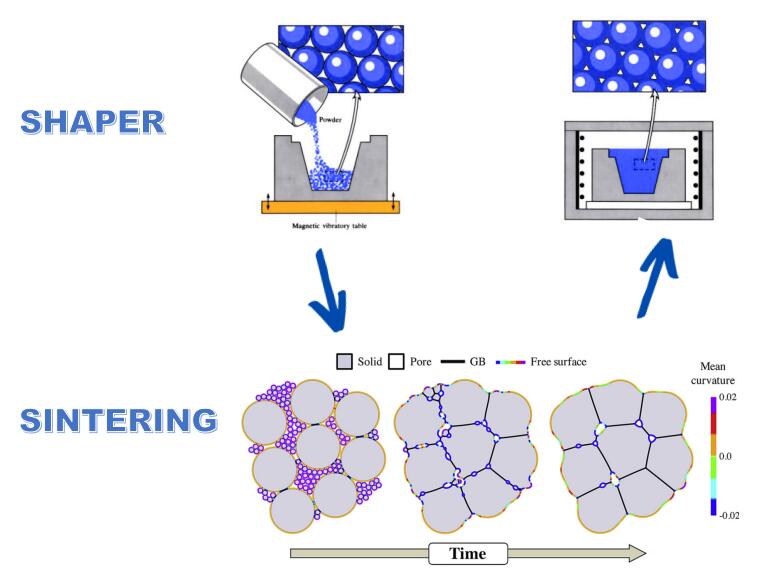
4. Why to Use Metal Sintering to Make Filter?
This is a good question, why use metal to make a filter?
The answer is simple, and although there are many reasons, the cost is the most important.
Why Cost ?
Yes, the sintered metal has a stable structure and can be reused, clean, and used many times.
And also, different metals have stable physical and chemical properties and are not easily damaged.
It is why more and more Sintered Filters are used in different industries.
5. What are the Material Choices for Sintered Filters?
With the continuous progress of powder metallurgy technology, there are more choices of
materials for sintered metal filters,
You can choose from many other metals and alloys to meet special requirements of higher
temperature and pressure, corrosion resistance etc , Main metal materials such as :
-
Stainless Steel Filter; 316L, 304L, 310, 347 and 430
-
Bronze
-
Inconel® 600, 625 and 690
-
Nickel200 and Monel® 400 (70 Ni-30 Cu)
-
Titanium
-
Alloys
More and more metal will be used in the future.
6. 8-Main Advantages of Sintered Metal Filter
1. ) Corrosion resistance
Most metals are inherently resistant to corrosion, such as sulfides, hydrides, oxidation, etc.
2. ) More effective removal of contaminants
Adjusting the porosity of the cartridge to the fluid means you can achieve the perfect
filtration you want and get a contaminant-free fluid. Also, since the filter does not corrode,
the filter's reaction does not result in the presence of contaminants in the fluid.
3. ) High Thermal Shock
During the manufacturing process, high heat is generated, and the physical properties of
these metals help absorb the filter's great thermal shock. As a result, you can use these
filters in a wide range of applications depending on the thermal range of the application.
Great thermal shock also ensures effective fluid filtration without having to worry about
the heat of the application.
4、) Reasonable Pressure Drop
A sintered metal filter can maintain fluid pressure in your application, thus ensuring
maximum operation.
A slight pressure drop can harm your application.
5. ) Temperature and Pressure Resistance
You can use this filter in applications with high temperatures and pressures without
worrying about your filter element.
Using sintered metal filters in the production process of chemical reactions and gas
treatment plants ensures you get the best filtration results.
6. ) Tough and Resistant to Breakage
Another benefit of using a sintered metal filter is that it is strong and resistant to
fracture.
During the manufacturing process, the bonding of metals occurs at temperatures well
below the melting point.
The resulting product is a tough sintered metal filter that can withstand various
harsh environments.
For example, you can use it in applications requiring friction without fear of breakage.
7.) Fine Tolerances
Fine tolerances mean that your sintered metal filter can filter your fluid without reacting.
Once your filtration is complete, the sintered metal filter will retain its physical properties.
However, it would help if you made sure that the metal you choose for your filter will not
react with the fluid you are filtering
8.) A range of Geometric Possibilities
Sintered cartridges allow you to enjoy a wide range of geometric options. You can achieve
this while inserting the powder into the dye during manufacturing.
The mold is the one that should design your filter.
Therefore, you are free to operate the design according to your specifications.
For example, if your application requires a small filter, you can easily manipulate the design
to obtain a smaller
sintered metal filter. Likewise, if your application has a distinctive design, you can easily
manipulate the design in the mold during manufacturing.
7. How Sintered Metal Filters Work?
This problem can also be said to be the working principle of sintered metal filters. Many people think
that this question is very difficult to answer, and it is not. You may be surprised by this, but maybe you
won't be after reading my explanation.
Sintered metal filters are very useful filters. The collection of contaminants occurs on the surface of
the fluid; when the fluid passes through the metal filter, the large particles and contaminants will be
left on one side of the cartridge, but when choosing an effective filtration level for your fluid, you
need to make sure that it can even filter the requirements.
These Requirements Include
1. Contaminant Retention Backwash Capability
2. Pressure Drop
For pressure drop, you need to consider several factors.
These factors include
A Fluid viscosity, fluid velocity as it flows through the filter element, and contaminant characteristics.
B Contaminant characteristics include particle shape, density, and size.
If the contaminant is hard and regular in shape, forming a dense cake, then surface filtration is appropriate.
The Effectiveness of Sintered Metal Filtration Depends on
1. the increased pressure drops to the point where the absolute pressure is reached.
2. the constant flow of the fluid.
You can achieve end conditions by thickening contaminants that increase to the point where the fluid pressure drops.
This pressure drops continuously until the maximum drop for a given viscosity and flow rate requirement is reached.
Another important issue is the back washing of the filter, which is performed by pressurizing the gas to the screen and rapidly
opening the backwash discharge valve as the backwash occurs.
A high reverse instantaneous pressure differential is generated. It effectively removes contaminants from the filter
element surface. The reverse flow of clean fluid through the filter element removes contaminants and directs them
out of the filter.
The steady rise in pressure drop rate indicates a consistent and uniform distribution of contaminant size. To
achieve consistent performance, you must ensure that the filter element's pressure drop is stable. If the temperature
of the fluid changes, it affects the viscosity of the fluid. In this case, the pressure drop across the filter element will
increase and not achieve the filtration effect.
Therefore, you need to maintain the working temperature of the filter during the filtration process and
ensure the temperature of the fluid and the pressure. When cleaning the filter, you need to follow the
correct back washing procedure.
How the Sintered Metal Filters Works ?
You can easy to understand when you check the follow Working principle diagram
As follow is main 8-Kinds of The working principle of metal filtration, hope it will be helpful for you to
understand more for how sintered metal Filter can help for fiteration liquit, gas and voice.
1.) Liquid & Gas Filtration/Separation
Sintered Metal filters can reduce or completely remove particulate matter from a gas or liquid medium.
Particulate matter can include but is not limited to suspended particles (sediment, metal chips, salt, etc.),
algae, bacteria, fungi spores, and unwanted chemical/biological contaminants. Metal filter pore sizes
can make to be range from 0.2 µm – 250 µm.
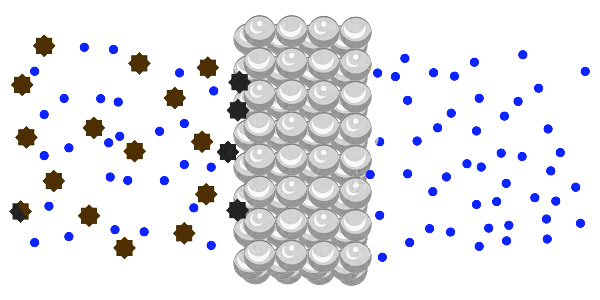
2.) Sparger
Some of Sparging Applications :
Soda Carbonization
Beer Carbonization
Oxygen Stripping of Edible Oils
Sparging is the introduction of a gas into a liquid. It is used to either remove an unwanted dissolved gas
(oxygen stripping) or a dissolved volatile liquid. It can also use to introduce a gas into a liquid (carbonization).
Traditional sparging created bubbles with a diameter of 6 mm. PM filter sparging allows for an even smaller
bubble diameter, thus increasing the surface area of the bubbles creating a more efficient sparging
application by decreasing process time.
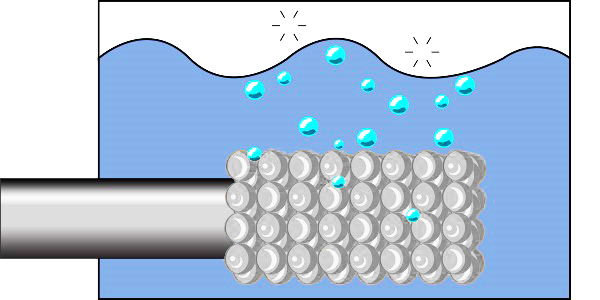
3.) Breather Vents
Sintered metal filters are also used as breather vents in cylinders, gearboxes, manifolds, hydraulic systems,
reservoirs, and other systems. Breather vents allow pressure equalization and air/gas in and out of a system
while blocking particulate matter from entering the system. Metal filters can be back washed to remove particulate
matter, giving them a longer lifespan as a breather vent than other filter media.
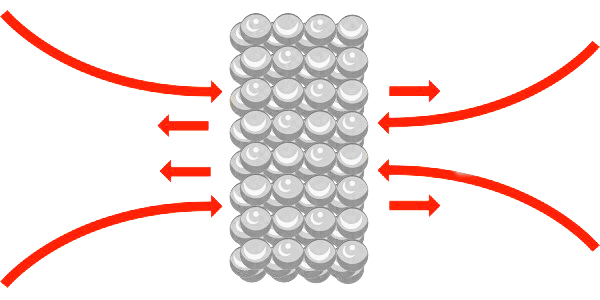
4.) Sensor Protection
Sintered Metal Filters can also protect electronic components as a cover, such as thermometers,
various sensors, key components of medical systems, and other sensitive products from water,
liquids, sediment, dust, and pressure fluctuation.
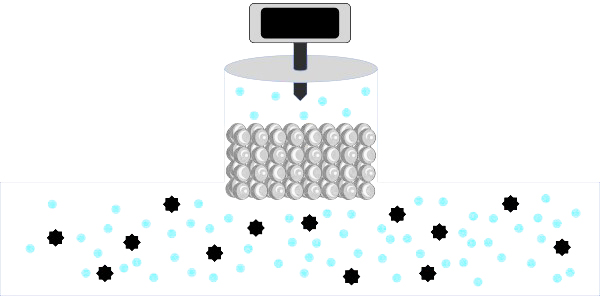
5.) Flow Control ( Throttling / Dampening )
A special sintered filter can control the flow within an air, gas, vacuum, and fluid flow system. The
filter's uniform pore sizes allow for consistent, repeatable flow regulation and protect valves, sensors,
and anything else downstream in the system from contaminants. Flow control is used in such
applications as pneumatic timers, gas supply control elements, and time delay elements in
automotive applications.
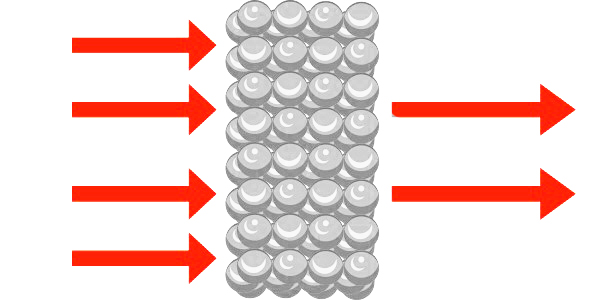
6.) Air Exhaust Silencers
Sintered filters can also be welded or sinter-bonded to any required fitting, allowing them to work as an
exhaust silencer. The filter cannot only protect solenoids and manifolds from contaminants inside the
system but also minimizes the noise level of exhaust from the system. The air exhaust silencer filters
also lower the air blowing out from the system, which minimizes contaminants wafting, Protecting
the environment.
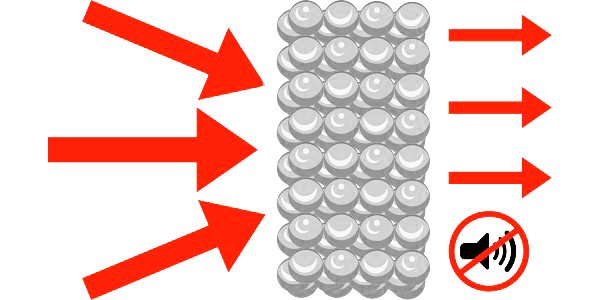
7.) Flow / Pressure Equalization
Sintered filters can equalize and control a system's flow rate and pressure. Equalization protects
systems against a surge of liquid and creates a uniform flow as the gas or liquid moves across
the uniform pores.
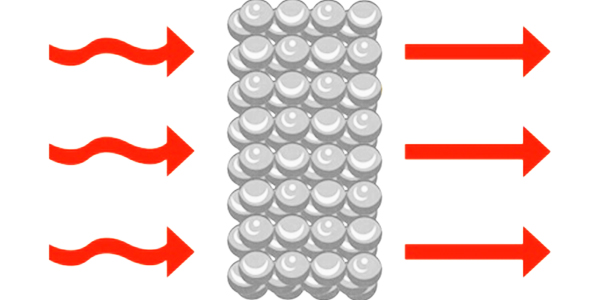
8. What Are Sintered Filters Used For ?
For this question, Actually more people will ask What are the application of sintered metal Filters?
After such a complicated process, where will the sintered metal filter cartridges be used?
The truth is that you can find these filters in various industries.
Common applications include the following.
1) Chemical processing
You can find sintered metal filters in the chemical solvent and gas processing industries, including the
nuclear industry. The corrosion, high temperature, and non-reaction to chemicals make sintered metal
filters a distinct advantage in
the chemical processing industry.
2 ) Petroleum refining
For petroleum refining, to effectively filter different fuels
We need to use different metal filters according to the degree level to complete the filtration of the
specific fuel from the feed stock. Yes, sintered metal filters can help you achieve this goal.
Because metal filters do not react chemically with the fuel.
Therefore, the specific fuel will be free of any contaminants after filtering.
In addition, you can use it at temperatures up to 700°, which is common in petroleum refining.
3.) Power generation
Hydroelectric power generation requires the continuous operation of a turbine. Still, the
environment in which the turbine operates often requires filtration to achieve a body of water in
which the turbine is free of any impurities.
If the turbine is overloaded with impurities, it will wind up and prevent the turbine from rotating,
and then the turbine will not generate electricity. You can use sintered metal filters to ensure
effective and efficient power generation.
These filters are used to generate electricity by filtering water from the turbine.
Because they are not eroded by water, the turbine will work for a long time.
4.) Natural gas production
Another important area of application for sintered metal filters is gas production.
Sintered metal filters are very useful in gas production because they do not react with the gas,
and you can use them in different environments.
5.) Food and beverage
Metal filters extract essential nutrients and juices in the food and beverage processing industry.
Metal filters effectively filter and prevent these nutrients from being washed away during processing.
The advantage of the same metal filters is that they do not react with specific foods or beverages.
When using these filters guarantees the quality of your production process.
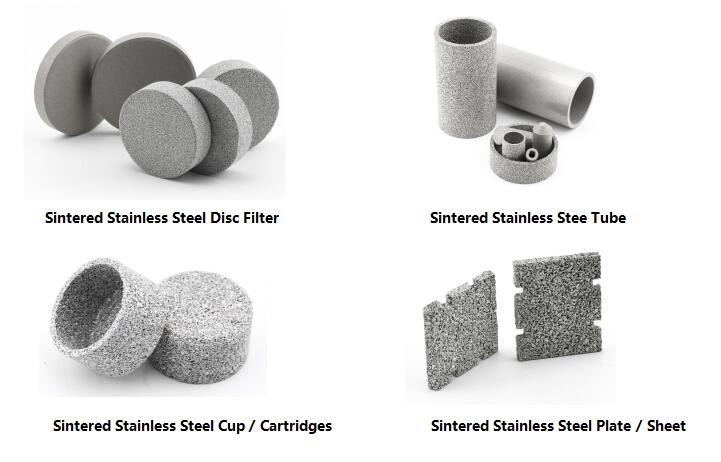
9. What kind of Sintered Metal Filters HENGKO Can Supply ?
HENGKO main supply 316L, 316 and bronze sintered metal filers. main shape such as follow list:
1. Stainless Steel Filter Disc,
2. Stainless Steel Filter Tube,
3. Stainless Steel Filter Plate,
4. Stainless Steel Filter Cups,
etc., any shape your project requires.
Sure, we supply O.E.M Service
1. O.E.M Shape : Disc, Cup, Tube, Plate ect
2. Customize Size, Height, Wide, OD, ID
3. Customized Pore Size / Apertures from 0.1μm - 120μm
4. Customize different Thickness
5. Mono-layer, Multi-layer, Mixed Materials
6. Integrated design with 304 stainless steel housing
For Your More O.E.M details, please contact HENGKO Today !
Still Have Any Questions Like to Know More Details For the Humidity Monitoring Sensor ,
Please feel Free To Contact Us Now.
Also You Can Send Us Email Directly As Follow : ka@hengko.com
We Will Send Back With 24-Hours, Thanks for Your Patient !
Send your message to us:
Post time: Aug-20-2022
